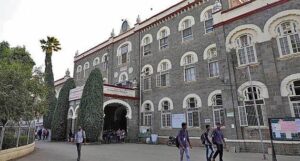Oxford University to Return Stolen 500-Year-Old Bronze Idol Back To India

Oxford University to Return Stolen 500-Year-Old Bronze Idol Back To India
The statue’s return is another victory in India’s ongoing efforts to reclaim cultural heritage items lost to colonial-era looting and illicit trafficking.
12th June 2024
Oxford University has officially announced its decision to return a 500-year-old bronze idol of Saint Tirumankai Alvar to India. This giant step follows the discovery that the artefact, believed to have been stolen from a temple in Tamil Nadu, had been in the possession of the Ashmolean Museum at Oxford since 1967.
The statue’s return is another victory in India’s ongoing efforts to reclaim cultural heritage items lost to colonial-era looting and illicit trafficking.
Historical and Cultural Significance
The statue of Saint Tirumankai Alvar, a revered Hindu saint from the 16th century, stands 60 cm tall and is an exquisite example of South Indian bronze artistry. The idol was acquired by the Ashmolean Museum from Sotheby’s auction house in 1967, coming from the collection of Dr J.R. Belmont, a noted collector active during the mid-20th century. Despite its acquisition in “good faith,” recent findings have traced its origins back to a theft from a temple in Tamil Nadu, highlighting a common issue with many artefacts housed in Western museums.
The Path of Return
The journey towards the return of the bronze idol began in earnest in November of the previous year when an independent researcher alerted the museum to the idol’s true origins.
The Ashmolean Museum promptly informed the Indian High Commission about the discovery. This proactive measure set the stage for the formal request from the Indian government, seeking the return of the artefact.
On 11 March, 2024, the University of Oxford’s Council supported the Indian High Commission’s claim for the return of the sculpture. This decision, however, is pending approval from the Charity Commission, a step required to finalise the process of its return.
Institutional Response and Responsibility
In a statement, the Ashmolean Museum emphasised its commitment to ethical stewardship of cultural artefacts, expressing that the statue was acquired without knowledge of its illicit origins.
The museum has also reiterated its dedication to rectifying historical wrongs by returning culturally significant items to their countries of origin.
The Ashmolean Museum is renowned for its extensive collection of art and archaeological treasures, making it a key institution in the global discussion on the repatriation of cultural property.
The return of the Saint Tirumankai Alvar idol is part of a broader trend of restitution that includes various high-profile cases.
Previous Repatriations and Continued Efforts
This latest instance of repatriation is not an isolated case. Last August, a limestone relief sculpture from Andhra Pradesh and a 17th-century “Navaneetha Krishna” bronze sculpture from Tamil Nadu were returned to India.
These artefacts were handed over to the Indian High Commissioner to the UK following a collaborative investigation by the US and UK authorities, including Scotland Yard’s Art and Antiques Unit.
Such efforts are the foundation of the ongoing and collaborative nature of recovering stolen artefacts. The cooperation between countries, independent researchers and institutions plays a critical role in uncovering the true provenance of these items and ensuring their return to their rightful owners.
Global Context of Cultural Repatriation
The return of the Saint Tirumankai Alvar idol is part of a larger global movement advocating for the repatriation of cultural artefacts. Countries across Africa, Asia and Latin America have been vocal about reclaiming items taken during colonial periods and through illicit means. Institutions in Europe and North America have been gradually responding to these calls, often prompted by ethical considerations and public pressure.
Repatriation efforts are complex, involving legal, ethical and diplomatic challenges. However, successful returns, like the bronze idol of Saint Tirumankai Alvar, provide a blueprint for how these challenges can be navigated. They also highlight the importance of origin research and international cooperation in addressing the legacies of colonialism and cultural theft.
The decision by Oxford University to return the bronze idol serves as a reminder of the importance of historical justice and the role that institutions must play in addressing past wrongs. As the process awaits final approval from the Charity Commission, there is a hopeful anticipation that this gesture will strengthen cultural ties between the UK and India, setting a precedent for future restitutions.
The return of the 500-year-old idol of Saint Tirumankai Alvar is a growing recognition of the need to rectify historical injustices. It reaffirms the value of cultural heritage and the right of nations to reclaim their stolen treasures, fostering a sense of historical continuity and respect for cultural identity.









